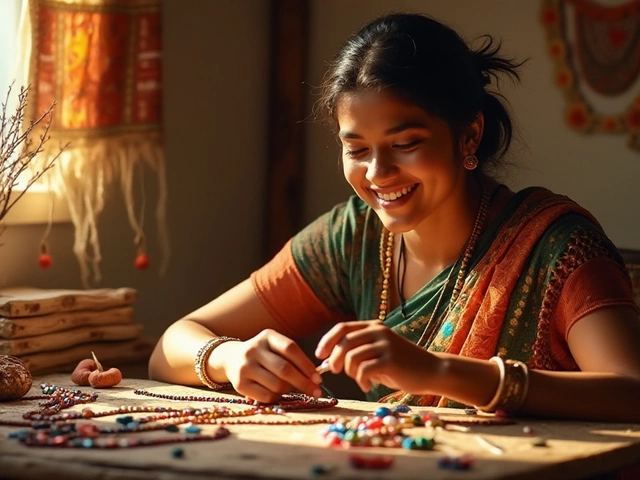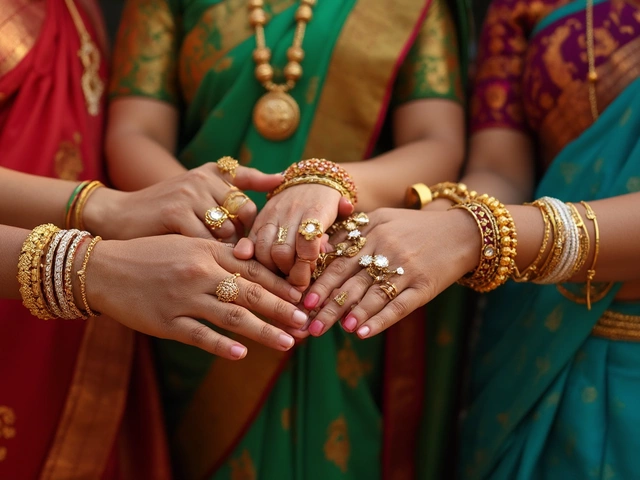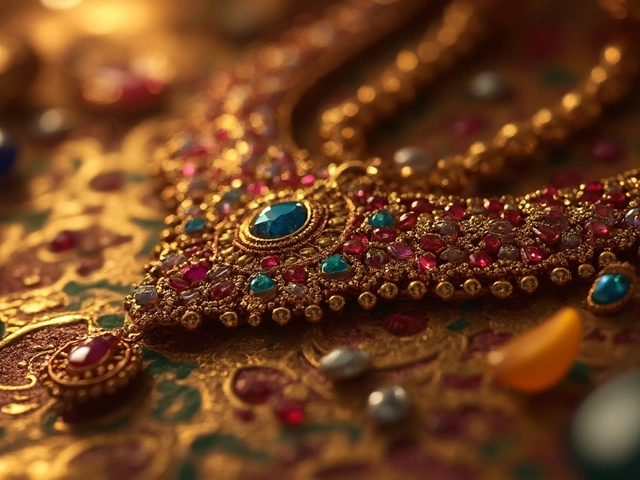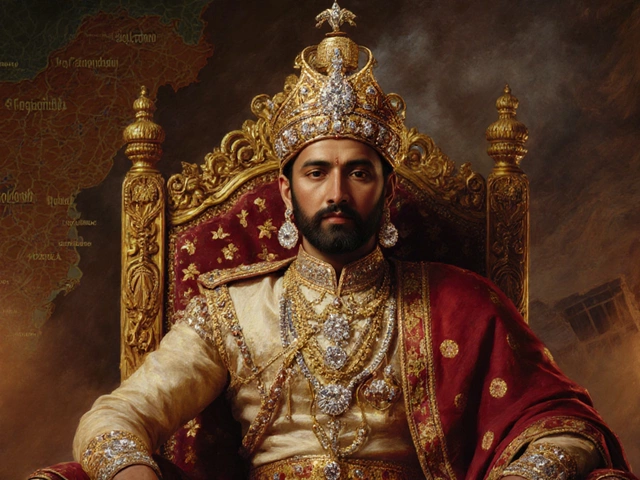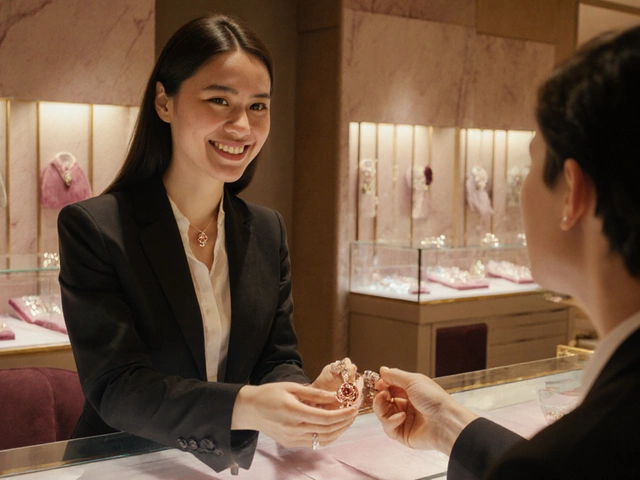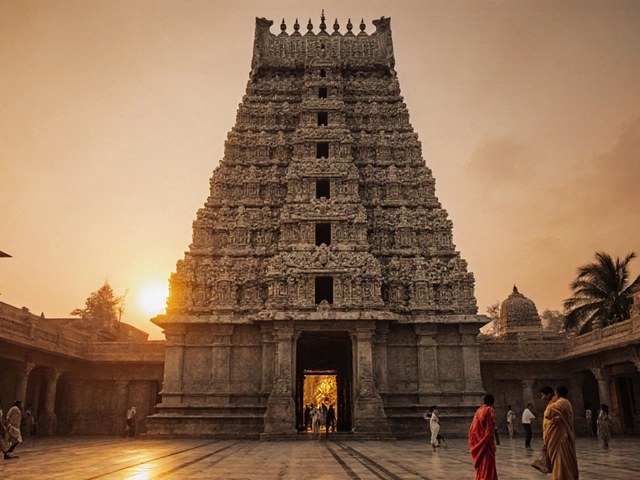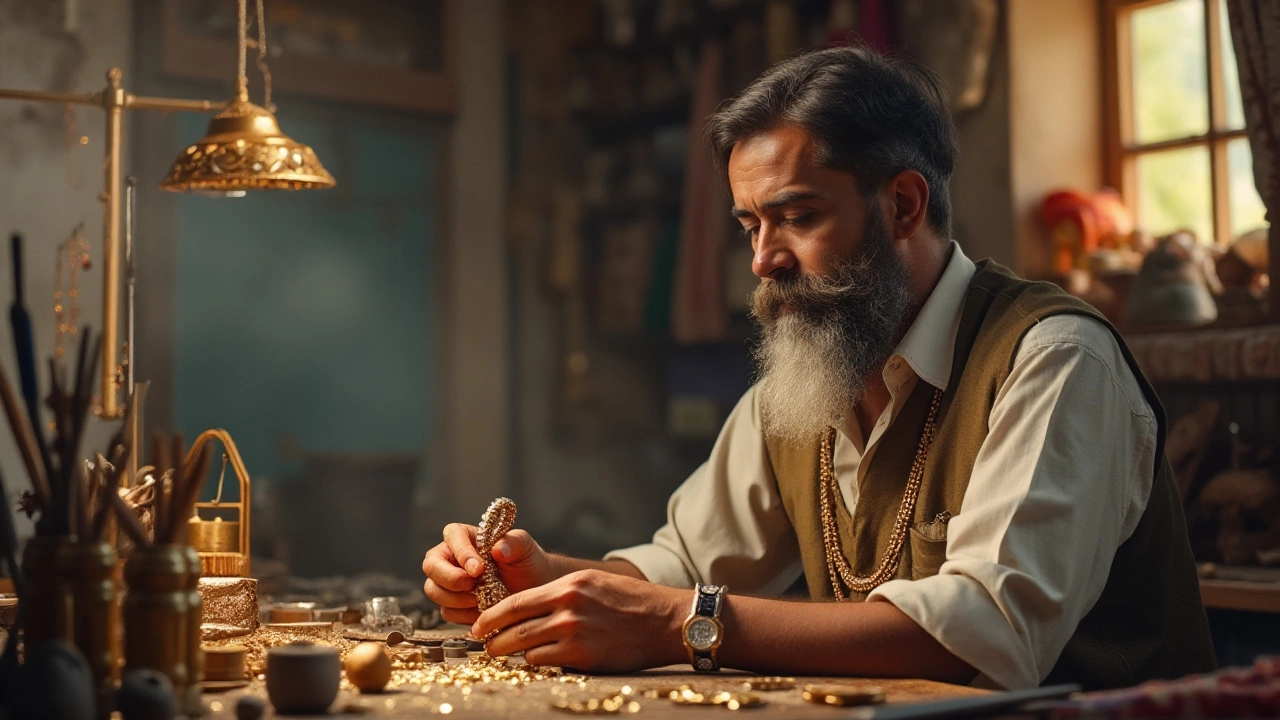
India, with its dazzling array of diamonds and intricate craftsmanship, has long captured the imagination of gem enthusiasts worldwide. As one of the early discoverers of diamonds, the country has a storied history that adds a layer of allure to its diamond offerings today. This shining legacy continues to influence how diamonds are perceived and valued globally.
Given its rich heritage in gemstone artistry, India has evolved into a major hub for diamond processing and trade, exporting jewels to all corners of the world. With advanced cutting techniques and unique design sensibilities, Indian jewelers are crafting pieces that appeal to a wide variety of tastes and preferences.
Buying a diamond ring from India involves more than just picking a sparkling stone—it's about understanding the cultural richness and ensuring responsible sourcing. Whether you're drawn to the traditional or more contemporary designs, there's much to learn about the intricacies involved. Let's delve into what makes India a promising option for diamond seekers worldwide.
- India's Historical Significance in the Diamond Trade
- Modern-Day Market and Quality Standards
- Tips for Buying Diamonds from India
- Cultural and Ethical Considerations
India's Historical Significance in the Diamond Trade
In a time long before modern mining techniques and international trade expeditions, India stood as the world's sole source of diamonds. The enchanting story of Indian diamonds starts over 2,300 years ago in the ancient alluvial deposits of the Krishna River delta. These precious stones weren't just mere rocks but embodied celestial beauty stored in Earth's crust, coveted by emperors and merchants alike. Historians reveal that diamonds from this region made their way to markets in Persia, China, and the vast reaches of the Roman Empire, each of whom marveled at their unmatched brilliance.
The significance of India in the diamond trade isn’t merely historical trivia—it’s an enchanting narrative that has shaped the desires and dreams of multiple civilizations. The notable diamonds like the Koh-i-Noor, looked upon with awe and intrigue, not only adorned crown jewels but became pivotal symbols of power and opulence. A quote from renowned historian Edward Gibbon highlights, “India, so great a storehouse of wealth itself, was lavish to pay for such beauty,” reflecting the depth of India’s diamond passion.
Beyond legendary stones, Indian artisans contributed immensely to the world of gemstones through pioneering cutting and polishing techniques. Such expertise allowed them to unlock deeper hues and more brilliant reflections, attributes that continue to define Indian-crafted jewelry even today. It wasn't until the 18th century that discoveries in Brazil began to compete, yet India's enduring traditions have secured its place as a respected cornerstone in the global gem industry.
Religious and cultural associations also drove the demand for these glinting marvels. Ancient texts, such as the Arthashastra, which date back to the Mauryan Empire, discuss diamond grading with a specificity that showcases India’s sophisticated understanding. Diamonds were tied heavily to mythology and were believed to bring fortitude and luck. It's fascinating how these beliefs intricately wove themselves into the fabric of trading ethics and practices over the centuries.
The lasting influence of India on the global diamond trade can be spectacularly visualized in the cultural exchanges it fostered. Gems transported via the Silk Road served as harbingers of Indian philosophies, art, and spiritual concepts to distant territories, building a rich tapestry of interconnectedness across continents. By continually refining their craft, Indian jewelers have maintained their allure and relevance throughout shifting economic and political landscapes. This historical penchant for brilliance and innovation remains evident in the contemporary designs crafted with enduring skill and passion.
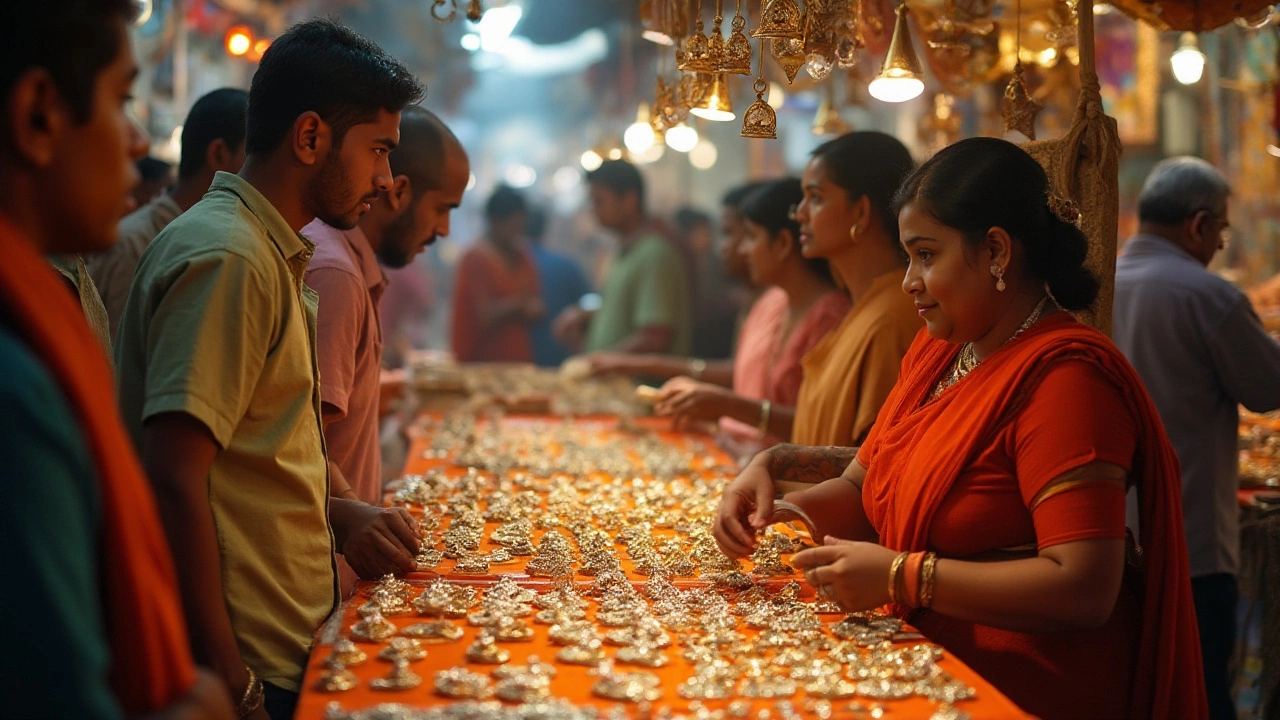
Modern-Day Market and Quality Standards
The contemporary diamond market in India is a compelling dance of tradition meeting innovation. As the world’s largest diamond cutting and polishing hub, India handles more than 90% of the global polished diamond market. This statistic not only reflects the country’s prowess but also underscores its capability to meet the ever-evolving demands of global jewelry enthusiasts. In cities like Mumbai and Surat, you'll find sprawling diamond districts bustling with skilled artisans who are seeing to it that every facet gleams with perfection. The skill these artisans display highlights how India combines age-old traditions with cutting-edge technology to deliver top-notch diamonds that captivate the heart of buyers worldwide.
Quality standards in India’s diamond market are stringent, given the significant emphasis on maintaining trust in global trade. The Gemological Institute of America (GIA) plays a pivotal role in setting these standards, providing certifications that ensure diamonds' quality and authenticity. A diamond certified by reputable organizations comes with detailed accounts of its cut, color, clarity, and carat weight, often referred to as the 4Cs, which are globally recognized. Bringing reliability to buyers, Indian jewelers work diligently to offer stones that meet these international quality benchmarks, thus giving the coveted sparkle without compromise. Diamond rings from India are thus valued for their detailed craftsmanship and certified integrity.
One might wonder about the economic dynamics that fuel such a potent market. India’s diamond industry benefits from a vast pool of labor skilled in precision cutting and polishing. The cost-effectiveness of this labor source not only makes diamonds more affordable but also sustains a dynamic industry that can pivot quickly to the trends and demands of luxury buyers. The nation’s commitment to ethical sourcing is also noteworthy. Measures are in place to ensure that diamonds are mined and traded according to ethical standards, deterring any potential association with conflict diamonds, commonly referred to as 'blood diamonds'. An ethically-sourced diamond doesn't just shine on the outside, but also represents a commitment to responsible progression.
"The beauty of an ethically sourced diamond is that its sparkle is unmarred by the shadows of conflict. It stands as a beacon of responsible luxury," notes Rajiv Mehta, a prominent figure in India's diamond trade.
The advancing technology in diamond grading and marketplace transparency has eased the process for consumers worldwide. Blockchain technology promises even greater transparency, ensuring every diamond's journey from mine to market is traceable. This transparency is invaluable to today's conscientious consumers who seek not just brilliance but assurance. For those considering purchasing diamonds, being informed about the transparency efforts and ethical considerations can empower them to make satisfying, responsible choices.
Given the sheer scale and influence of India's diamond industry on the global stage, anyone investing in diamonds from India can be sure of receiving exquisite quality polished by the hands that cherish tradition and embrace innovation. As this market continues to evolve, it's a promise of exciting new possibilities for connoisseurs worldwide.
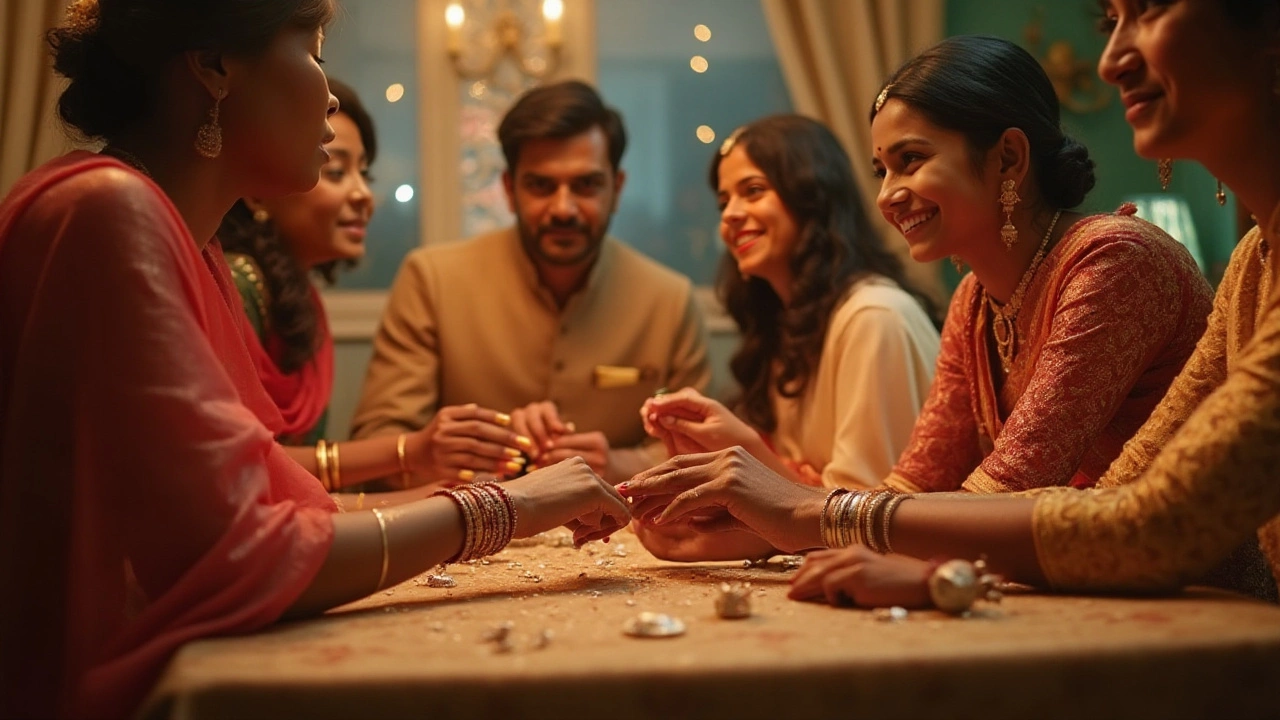
Tips for Buying Diamonds from India
Navigating the world of diamonds in India can be a mesmerizing experience, filled with an array of choices that suit every taste and budget. However, making a purchase requires smart decision-making and a keen eye. First, identify the type and style of diamond rings you desire. Indian jewelers excel in diverse design styles, from traditional to modern, making it crucial to have a clear vision before you start. Sketch or save images of designs you admire to guide your search effectively and avoid getting overwhelmed by the sheer volume of options available. Remember that each store has its forte, so research them in advance to find one that aligns with your preference.
When buying from India, ensure the authenticity of the diamonds by seeking out reputable sellers who provide certified gems. Look for certifications from respected authorities such as the Gemological Institute of America (GIA) or the International Gemological Institute (IGI). These certifications assure you of the diamond's quality, providing details on clarity, color, carat, and cut. Ask for transparent pricing and breakdowns to understand what you are paying for, including taxes or additional costs. Negotiation is a common practice in this market, so feel prepared to discuss prices. Often, legitimate sellers are fine with bargaining, reflecting in price reductions.
The ethical aspect of diamond procurement in India cannot be overlooked. Be vigilant about the sourcing of the diamonds and ensure they are conflict-free. Many jewelers now adhere to the Kimberley Process Certification Scheme, a system designed to prevent trade in blood diamonds. Make sure to inquire about their compliance. As Alok K. Mehta, a prominent figure in the jewelry industry, once stated,
“Ensuring ethical sourcing is not just responsible; it's imperative for maintaining a brand of integrity.”Taking this into account not only supports ethical practices but also maintains the legacy of your purchase, reflecting responsible consumerism.
For those unfamiliar with Indian culture, it's worth noting that traditions often influence jewelry styles. This heritage is apparent in vibrant colors, intricate designs, and chunky settings that are distinctively Indian. Educate yourself about these customs, as they can add significant value and meaning to the piece you select. It might be worthwhile to understand which festivals or occasions align with certain styles, especially if your purchase is meant as a gift or for a particular event. Moreover, language barriers can sometimes pose a challenge, so don't shy away from using professional interpreters if necessary to facilitate smooth communication.
A critical consideration is budgeting. While India is renowned for competitive pricing due to the lower cost of labor and abundant raw material, be cautious about offers that seem too good to be true. A significant markdown might indicate a compromise on quality or authenticity. Create a budget that includes all potential costs, from customs duties to local taxes, and plan accordingly. Opt for financing options if available, as many reputable jewelers provide installment plans to help make valuable purchases more manageable. Remember, a well-informed decision goes a long way in ensuring satisfaction with your newfound treasure.
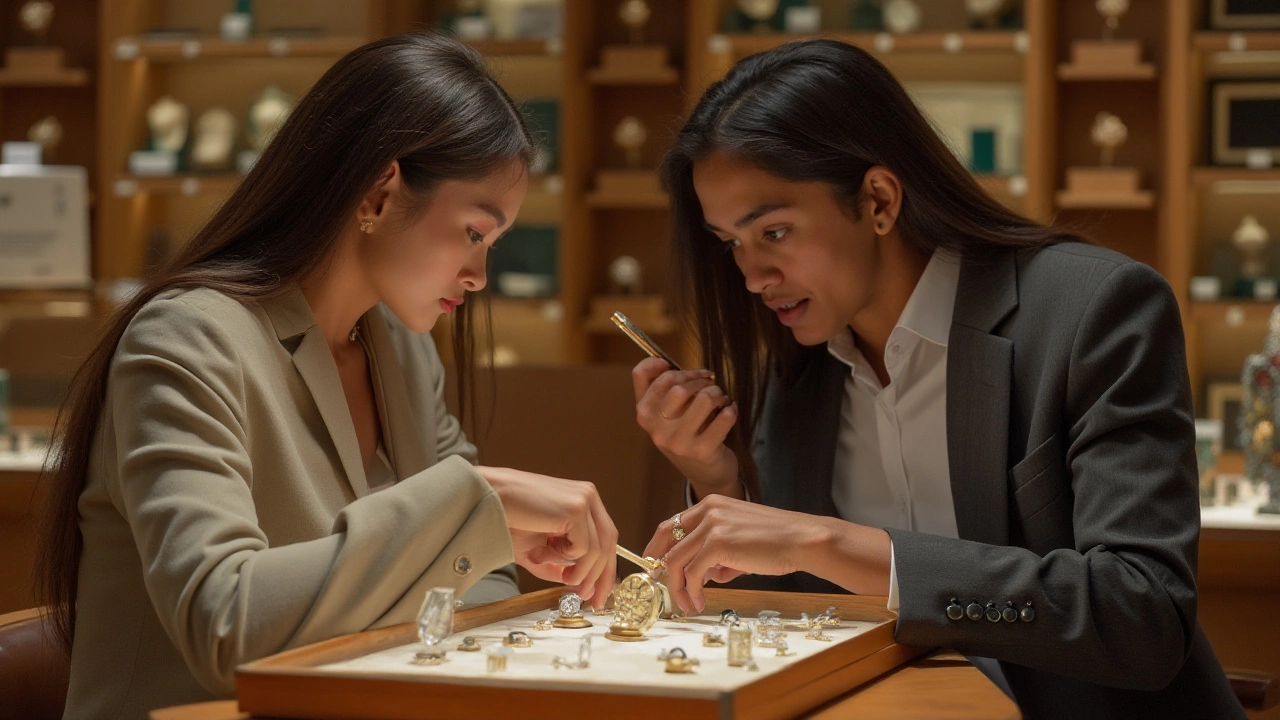
Cultural and Ethical Considerations
When diving into the fascinating world of diamonds from India, one must not overlook the cultural depth and ethical dimensions that accompany the glittering stones. As the cradle of early diamond discovery, India holds millennia-old traditions that continue to shape its gemological practices. Understanding these cultural aspects provides buyers with a more profound appreciation for their stunning purchase. Diamonds in India are often intertwined with deep-rooted ceremonial significances, often serving as symbols of purity, abundance, and marital bliss. Ceremonial gifting of diamond rings and jewelry during weddings is commonplace, steeped in customs that have been passed down through generations.
On the ethical front, prospective buyers should prioritize understanding the sourcing practices of the diamonds they wish to acquire. The diamond industry worldwide has faced scrutiny over the years due to concerns about conflict diamonds and the ethical implications of mining. India has made significant efforts to address these issues by adhering to the Kimberley Process Certification Scheme, which aims to prevent conflict diamonds from entering the mainstream market. This commitment underscores a key consideration for conscientious consumers who wish to ensure their purchases do not fuel unethical practices. It is reassuring to know that many Indian merchants are actively engaged in fair trade practices and transparent certification.
Echoing this sentiment, a prominent figure in the industry once stated, "Ensuring the ethical sourcing of diamonds is not just an option but a responsibility that upholds the integrity of our craft." This perspective encourages buyers to ask questions regarding the provenance of their diamonds and consider certifications like the Kimingly Process Certification when making a purchase.
To aid in understanding these complexities, here is a breakdown of common ethical certifications and what they signify:
- Kimberley Process Certification: A global initiative to prevent conflict diamonds from being traded.
- Responsible Jewellery Council (RJC): Companies that are RJC certified follow a code of practices covering human rights and labor practices.
- Fair Trade Certification: Ensures miners are fairly compensated and work under safe conditions.
By being well-informed about both the cultural nuances and ethical standards of the Indian diamond trade, buyers can make decisions that are both enriching and morally grounded. Embracing this knowledge allows individuals to connect more intimately with their chosen pieces, appreciating not just their physical beauty, but also the stories and values they embody.

